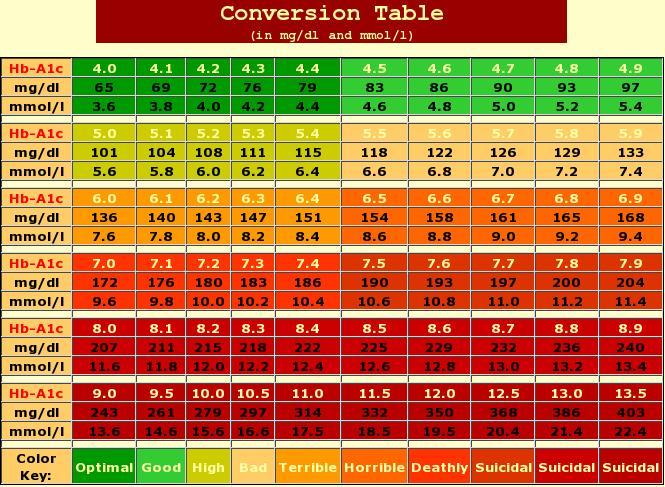Diabetes is a disease that can't be "trusted." I grasp that's an odd
manner of putting it, however bear with me for an instant here. As a
medical professional, I have dealt with countless cases of diabetes. I
have always been amazed people can arrange for the future as they build
lives, careers, families, dreams…creating and pursuing commitments for
the long run… And nonetheless, one issue stands out consistently. Folks
with diabetes tend to hope the disease can just "maintain itself," that
it will just keep at standing quo for the long term.
There was this guy who jumped off the 37th floor of a tall building. As he fell, folks at every floor inside the building heard him say as he passed them, "So far, therefore sensible…thus way, so good..."
Diabetes cannot be trusted to stay anywhere…abundant less at standing quo. Like the guy falling from the 37th floor, people with diabetes tend to keep telling themselves… "Therefore way, so good…so so much, therefore smart…thus way, so good…" Of us, hope isn't a technique. It is a necessity, but it is NOT a method in managing a disease like diabetes.
Diabetes: The "fall out" is simply too nice to ignore…
Diabetes cannot be trusted to stay anywhere…abundant less at standing quo. Like the guy falling from the 37th floor, people with diabetes tend to keep telling themselves… "Therefore way, so good…so so much, therefore smart…thus way, so good…" Of us, hope isn't a technique. It is a necessity, but it is NOT a method in managing a disease like diabetes.
Diabetes: The "fall out" is simply too nice to ignore…
A study revealed in the 1997 issue of the Proceedings of the Fisher
Institute for Medical Research showed folks with kind one diabetes who
got glyconutrients "…reported a dramatic improvement in their health, as
well as a decrease in vision problems, better wound hearing, less
infections, and lower blood pressure." (Miracle Sugars, by Rita Elkins,
M.H., Woodland Publishing, p. twenty six -Excellent fast reference
incidentally!)
As I said earlier, I am amazed how well individuals can arrange for the long run, making and pursuing future commitments but do not set up long-term for diabetes. Of course, the natural question is: "What are the long run problems with diabetes?"
With diabetes, an individual is two to four times a lot of probably to develop cardio-vascular disease. Being a cardio-vascular surgeon, I saw this particular problem constantly in my field. And I saw it consistently in young and middle aged folks with diabetes.
With diabetes, folks are TWENTY-FIVE times additional probably to develop retinopathy (deterioration of the retinas). Because of diabetes, twenty four,00zero individuals lose sight every year!
With diabetes, 60-70percent of these afflicted suffer nerve damage which will cause non-traumatic lower limb amputations. This is because of the fact that open sores that do not heal, accompany diabetes. As they become ulcerated, the diabetic faces complications that can lead to amputation of limbs.
People with diabetes are AT RISK for kidney failure.
Diabetes is accountable for the increased risk for strokes…2 to 6 times a lot of probably as a result of of their condition.
Diabetes: the good news or the bad news…
Well, that do you wish…the good news or the dangerous news first?
As a doctor, having controlled diabetes in many patients, it's always best to understand the DANGEROUS news up front. Why? Complacency is harmful to your health. The danger with diabetes is individuals get complacent. Nothing appears to happen till, suddenly, it appears to sneak up on you with its complications…
The bad news can be EXTREMELY dangerous if you are someone who has any of the following conditions that very complicate diabetes. Complicating factors are:
1 smoking,
2 high cholesterol,
3 high blood pressure,
four obesity,
5 physical inactivity
With these factors, predicting the progress of diabetes is very problematic. Simply place, they MUST be brought underneath control, if possible. Diabetes so becomes terribly unpredictable.
By keeping your blood glucose underneath control, you'll be able to scale back the danger of complications of diabetes up to 76percent. That is sensible news.
More smart news: By healthy eating, accountable dietary weight loss, regular physical activity, monitoring blood sugar… you'll reduce risk in diabetes.
Unhealthy news: Standing quo again. You're still "stuck" with diabetes.
Diabetes: Being hit by "friendly fireplace."
Each sort 1 and kind a pair of diabetes are auto-immune conditions. In type1 diabetes, the immune cells are mis-instructed to attack islet cells within the pancreas that make insulin.
Mind you, there is nothing wrong with the islet cells. There's MIScommunication by the immune system of the body. In different words, immune attack cells can get faulty messages and destroy healthy tissue. Is not it simply awful that your diabetes will be caused by "friendly fireplace?" (Military terminology here. The great guys are hitting their own sensible guys with artillery fire.)
MIS-communication …. hum. Sounds like what's required could be a healthier communication system at the cellular level thus the body isn't attacking its own healthy cells.
Now, for a few very sensible news…
Glyconutrition is the nutritional provision which provides the body with healthy CELLULAR COMMUNICATION. In alternative words, for diabetes, this implies less "friendly hearth."
Remember, each sort 1 and type 2 diabetes are auto-immune conditions. Read carefully, this next statement by medical researcher, Dr. Neecie Moore:










